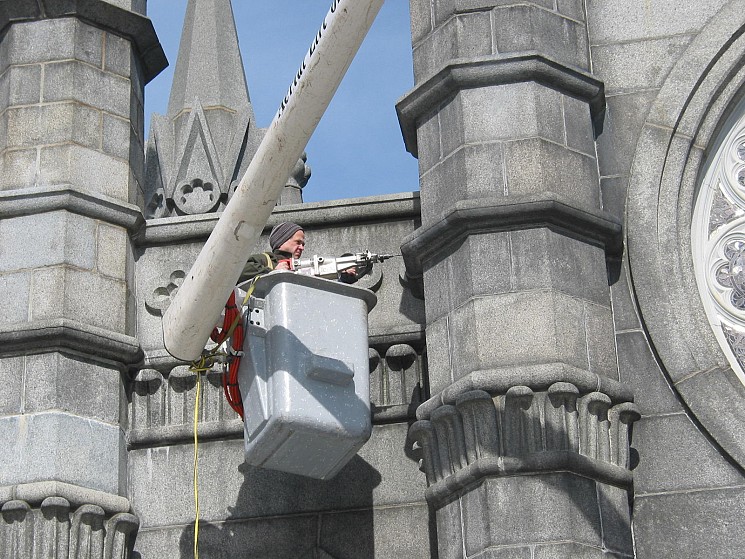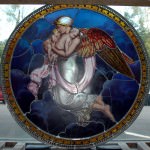Bigelow Chapel Restored

In celebration of Mount Auburn Cemetery’s 175th anniversary, the Cemetery decided to mark its commitment as stewards of this National Historic Landmark by undertaking the rehabilitation of Bigelow Chapel.
Originally constructed in 1846, the chapel is named after Jacob Bigelow, the building’s designer, a founder of the Cemetery, a renowned professor of medicine, and a published botanist. Bigelow Chapel is absolutely unique in its combination of elements of different architectural styles to create a picturesque vision perfectly suited to the landscape in which it sits.
In 2004 concerns over recurring leaks, deterioration of the interior plaster and staining of the pinnacles prompted a thorough assessment of the exterior of the building. The assessment found that the slate roof, which had been patched and repaired periodically over the years, was at the end of its useful life. Deteriorated flashings, open chimneys, and the loss of mortar from the masonry joints were also permitting water to penetrate into the building.
To address these issues Mount Auburn is embarking on a two year, two million dollar restoration of the chapel’s exterior. The restoration will include installing a new slate roof and new flashings, repointing the masonry, installing chimney caps, and repairing and painting doors and windows.
In addition, this ambitious project includes restoration of the large stained glass window on the north side of the Chapel. The stained glass was produced by the Scottish firm of Ballantine & Allan and originally installed when the building was constructed in 1846. The window will be removed, restored at a stained glass conservators shop, and reinstalled when construction is complete. Additionally, 4 panels of the rose window on the south side will be temporarily removed and to accommodate the shoring necessary to complete the pinnacle reconstruction.

Leave a Reply